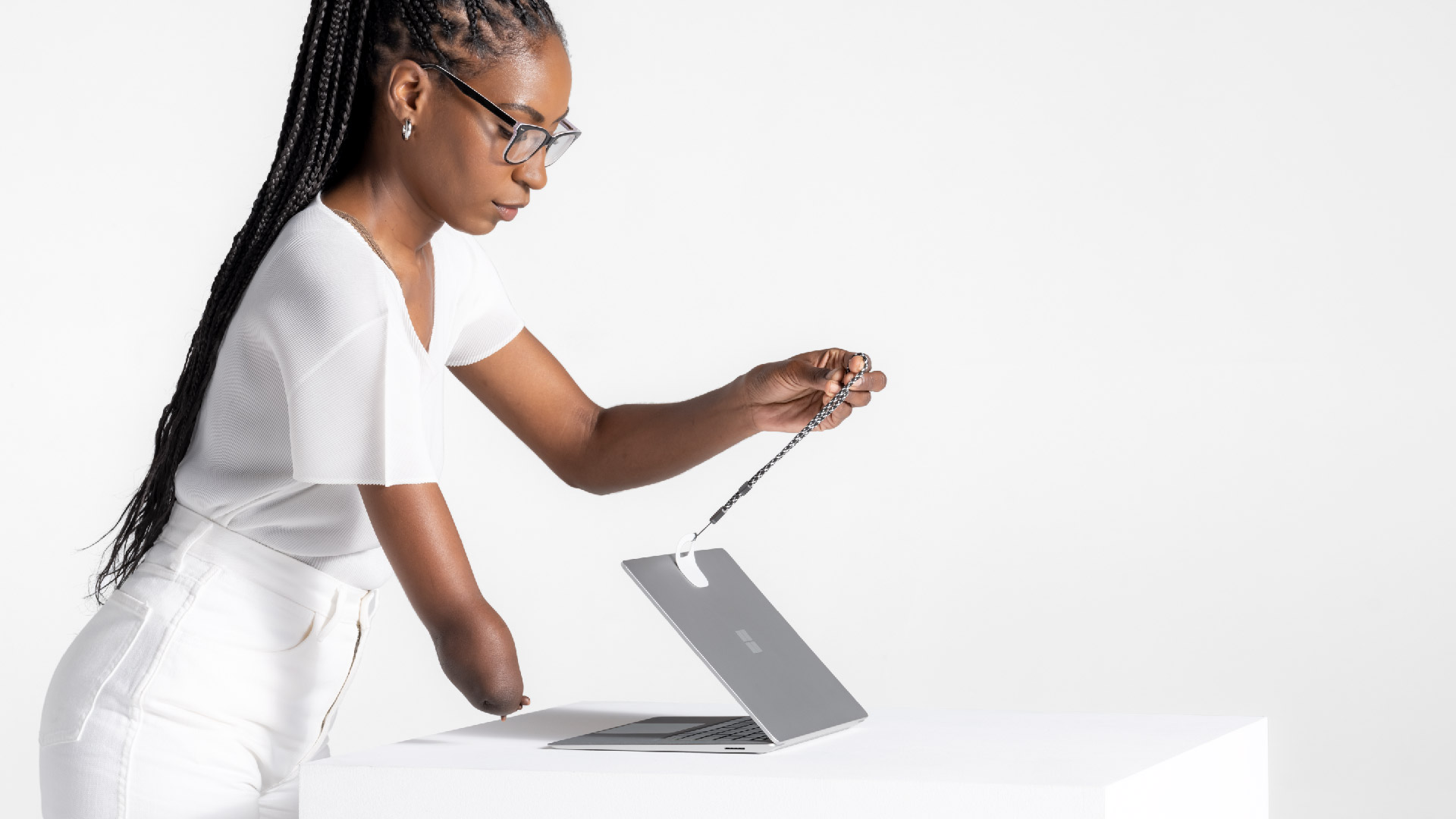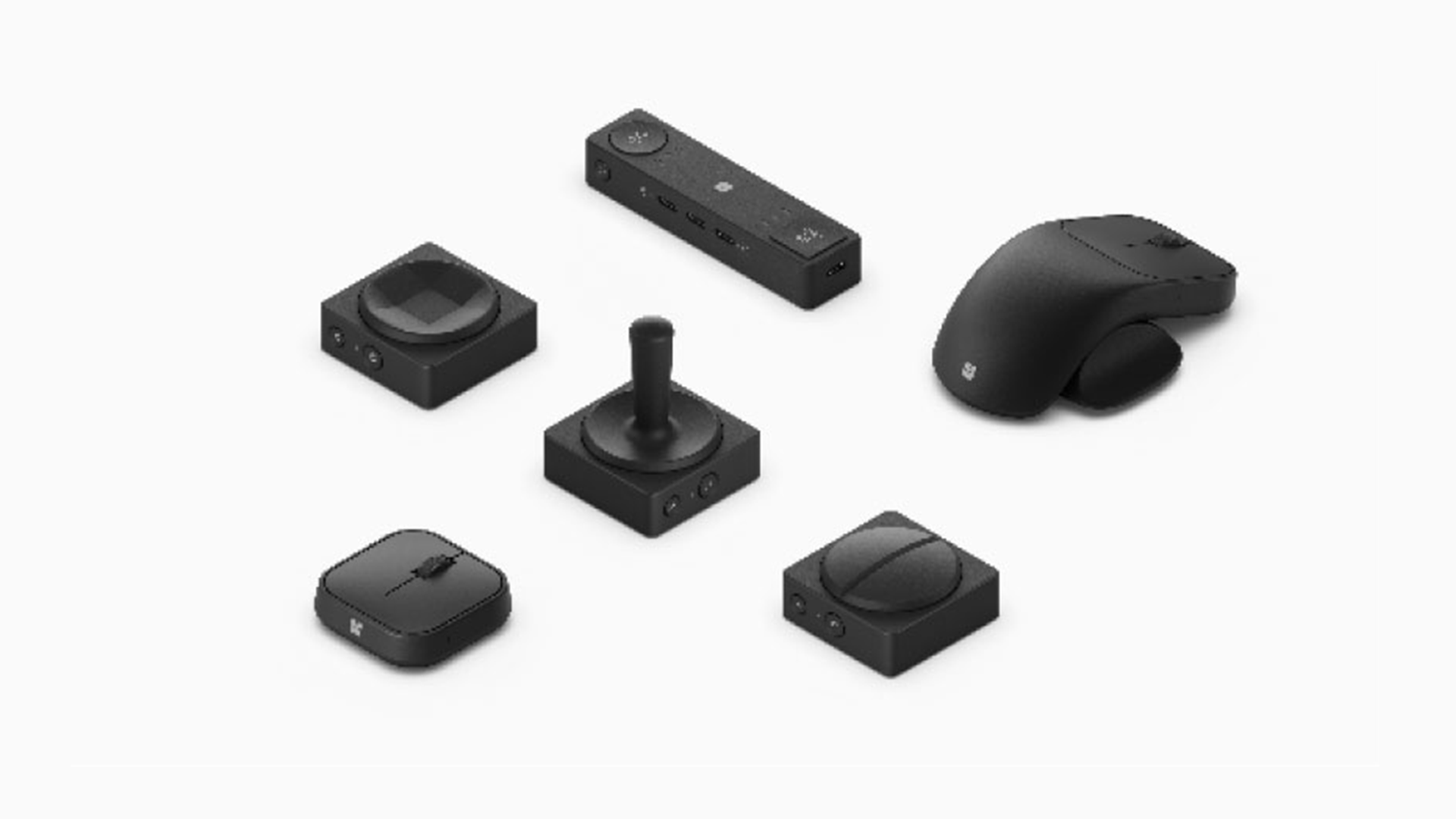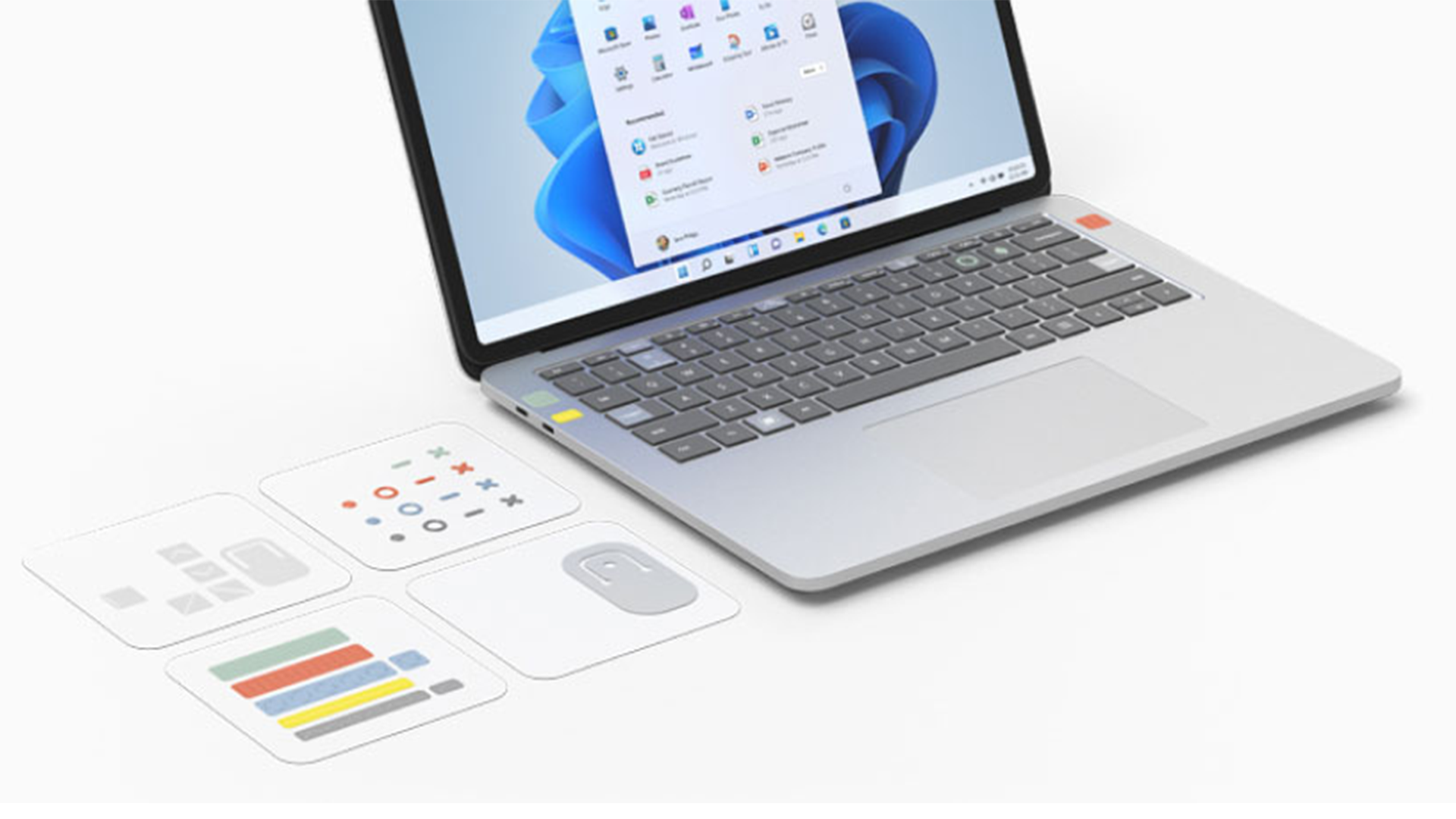
The origins of the kit date back a few years to when some of Microsoft’s X-Box designers got a group of people with disability together to share ideas on making the product more user-friendly. In the spirit of ‘nothing about us without us’, this was a good first step that also made solid commercial sense. After all, people with disability make up a sizeable part of the potential customer base.
Those X-Box sessions made an impact among Microsoft’s design team, so much so that when it came to the range of Surface devices, consultation was a given. A team of Microsoft employees with disability joined with the broader disability community to identify ways the devices could be made easier to use.
This led to the design of the Surface Adaptive Kit.

Clearly, since disability covers a very wide range of challenges, the kit needed to be designed to be used in different ways to suit each user. The Microsoft employees involved in beta testing were especially creative in the ways they used the bump labels, a range of textured stickers that can be attached and re-attached for a range of purposes. While it was envisioned these labels would help to quickly locate different ports on the devices, or specific keys on the keyboard, the developers had not expected them to also make it easier to use the microwave.
The kit also includes translucent key cap labels, again, making it easier to navigate a keyboard for those with vision impairment, so that touch-typing is easier. There are cable wraps with raised textures, and these match the port indicator labels, making it easy to match the right cable with the right port. Again, these proved popular for devices beyond the Microsoft Surface.

Completing the kit is an opener support that provides extra leverage to open the Surface device or kickstand, something that a number of those original research group participants had identified as an issue. They’d reported starting meetings wrestling to open devices while others were already in discussion about the matter at hand. The opener support provided an easy fix that meant users no longer felt they were left behind.

In Australia, people with disability who want to work are almost twice as likely [1] to be unemployed as those without disability. 45.2% reported experiencing discrimination from their employer, with almost as many reporting discrimination from their co-workers [2].
Clearly, the barriers extend far beyond device usage. If by improving digital equity through Microsoft accessibility features, we can help to level the playing field for that 8.8% of the workforce with a disability, perhaps it will pave the way for greater participation and a more equal future at home, school, and work.
Windows 11 was inclusively designed to support productivity, creativity, and ease of use for people with disabilities. With a robust set of built-in and third-party accessibility features, Windows adapts to you.
Microsoft 365 provides accessible apps and cloud services to help people and organisations create, communicate, and collaborate from any device. Find out how Microsoft 365 helps make everyone more inclusive and independent.
Learn more about a complimentary Microsoft Security and Modern Workplace Workshops, for eligible organisations using Microsoft technologies.
[1] Disabled People’s Organisations Australia. Factsheet: Employment of Persons with Disability. Available at https://dpoa.org.au/factsheet-employment/
[2] Australian Bureau of Statistics. Disability and the labour force. Available at https://www.abs.gov.au/articles/disability-and-labour-force#:~:text=In%202018%2C%20of%20half%20a,with%20moderate%20or%20mild%20disability